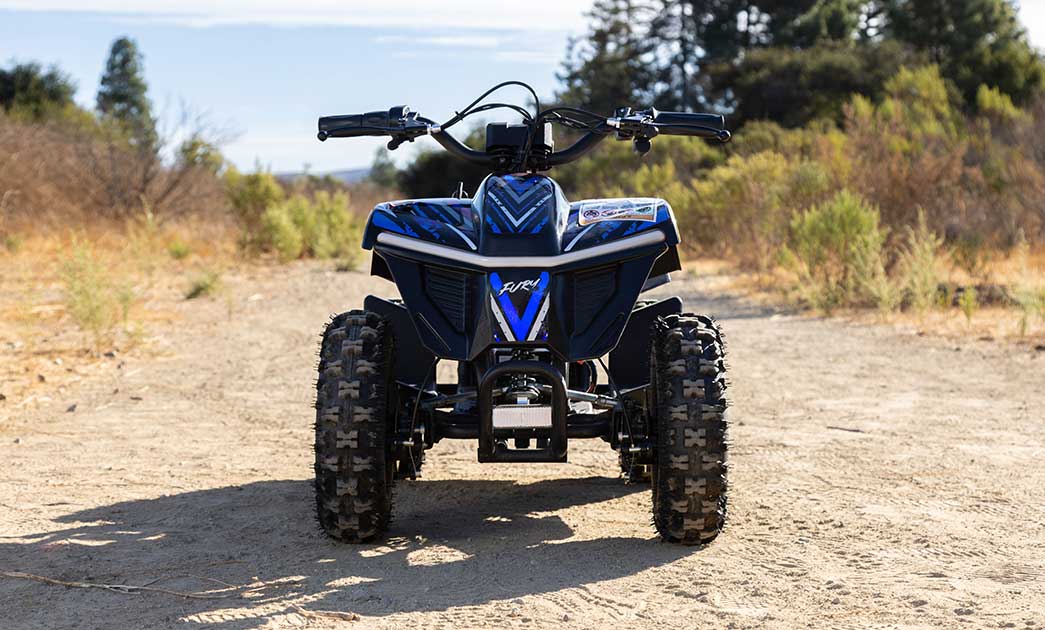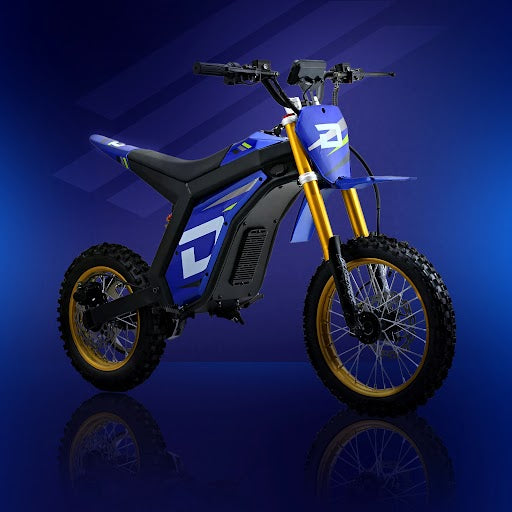Free Shipping on All Orders!

UTV Vs. ATV: What's The Difference?
Posted on
Off-road vehicles come in different forms, each built for specific types of terrain and riders. The comparison of UTV vs. ATV highlights two of the most common and exciting choices for outdoor adventures.
An ATV is designed for a single rider with a straddle-style seat and handlebar steering. A UTV, on the other hand, allows two or more people to sit side by side while steering with a wheel. These structural differences influence everything from control and comfort to how gear is carried and how each machine handles rough conditions.
Vehicle Design and Seating
Youth ATVs are built with a slim frame that allows young riders to shift their weight as needed. The straddle seat combined with handlebar steering creates a natural feel during quick turns.
Most models feature lightweight steel or aluminum tubing for strength and durability. Padded seats are shaped to support a child’s posture, helping them stay secure over bumps, dips, and small obstacles.
Steering and Control
An ATV uses handlebars to give the rider direct control. Steering and balance rely heavily on the rider’s arms and body position. UTVs steer with a wheel and use foot pedals, much like a car. The wheel provides smooth control over rough trails and helps reduce arm strain. This design is especially helpful during longer rides or when navigating uneven paths.
Passenger Capacity and Comfort
Youth ATVs typically carry one rider, though some models allow a second small passenger to ride close behind. Seats are padded and shaped for comfort, with optional backrests for added support.
Adjustable foot pegs help fit different leg lengths and give young riders a more comfortable and stable ride. UTVs offer greater seating capacity and include seat belts, armrests, and overhead protection for a more enclosed experience.
Cargo Space and Storage
ATVs usually come with a front or rear rack for carrying light loads. Soft saddlebags now wrap around these racks and hold snacks, tools, or spare gear. These bags are built from water-resistant materials that withstand splashes and mud.
Reflective accents improve visibility as trails stretch into the evening. This kind of practical storage keeps essentials secure while maintaining the ATV’s balance and maneuverability.
Speed and Handling
ATVs are known for their agility on tight trails. Their narrow size and low center of gravity help young riders steer easily around trees and turns. Modern suspension systems with adjustable shocks improve comfort and responsiveness.
UTVs are larger and sit higher, which can limit sharp turning but add stability over rocky or uneven terrain. When comparing UTV vs. ATV, ATVs often feel more responsive, while UTVs provide smoother handling for longer rides.
Terrain Adaptability
ATVs perform well on narrow paths and in tight spaces. Riders can shift weight to climb over roots or rocks, while aggressive tire treads help maintain grip on soft or slippery ground.
UTVs excel in open fields, muddy tracks, and wide trails. Their large tires and robust suspension absorb more impact – a strong choice for farm roads or extended off-road trips.
Maintenance and Upkeep
ATVs use smaller engines, which makes basic maintenance tasks quicker and easier. Routine care includes oil changes, air filter cleaning, and spark plug checks. Many youth models now feature tool-free access to air filters, making cleanup fast after a dusty ride.
UTVs are more complex, often including additional wiring and cab components. Although maintenance takes a bit more time, both types require regular cleaning and inspection to perform safely.
Cost Considerations
ATVs are generally more affordable than UTVs, both in initial purchase and replacement parts. Entry-level models still include safety features and storage racks.
UTVs, however, come with more built-in components like extra seating and roll cages, which raise the price. Regardless of choice, riders should also plan for safety gear and optional add-ons to complete the experience.
Legal and Insurance Needs
Both ATVs and UTVs must follow age-based guidelines and local riding laws. Some areas restrict where and when these vehicles can be used. Helmet regulations often apply, with certified stickers verifying safety compliance.
UTVs may be allowed on certain roads if registered properly. Insurance coverage also varies by vehicle type, especially if modifications or cargo use are involved.
Choosing Your Machine
When deciding between a UTV vs. ATV, think about who will ride and where the rides will happen. A youth ATV works well for solo adventures through wooded trails, while a UTV better suits family outings or gear-heavy trips. Trying both on a familiar trail may help reveal which one fits your needs and comfort level.
At Droyd, we build electric off-road rideables made for kids and teens who are ready to explore. Each model combines safety-focused design, strong construction, and intuitive controls that parents appreciate.
To explore our full range or ask questions about your next adventure, please contact us.




